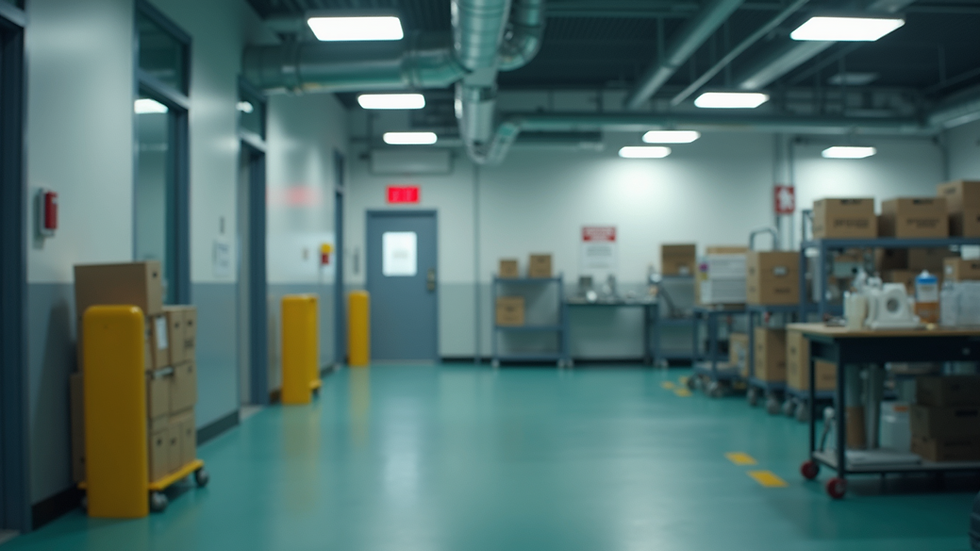Proactive Strategies to Enhance Workplace Safety
- stevenheinzesh3

- Oct 20
- 3 min read
Workplace safety is a critical aspect of any organisation. Ensuring a safe environment not only protects employees but also boosts productivity and morale. Proactive safety strategies help prevent accidents before they happen, reducing risks and fostering a culture of care. This article explores practical and effective ways to enhance workplace safety through proactive measures.
Understanding Proactive Safety Strategies
Proactive safety strategies focus on identifying potential hazards and addressing them before they cause harm. Unlike reactive approaches, which respond to incidents after they occur, proactive methods aim to prevent accidents through continuous monitoring, training, and improvement.
Some key elements of proactive safety strategies include:
Risk assessments: Regularly evaluating the workplace to identify hazards.
Employee training: Educating staff on safety protocols and emergency procedures.
Safety audits: Conducting inspections to ensure compliance with safety standards.
Open communication: Encouraging employees to report unsafe conditions without fear.
Use of technology: Implementing tools like sensors and software to monitor safety.
By integrating these elements, organisations can create a safer work environment that minimises risks and protects everyone involved.

Implementing Effective Safety Strategies in the Workplace
To successfully implement safety strategies, organisations need a structured approach. Here are some actionable recommendations:
Develop a Safety Policy
Create a clear and comprehensive safety policy that outlines responsibilities, procedures, and expectations. This policy should be accessible to all employees and regularly updated.
Conduct Regular Training Sessions
Training should be ongoing and tailored to specific roles. Use practical demonstrations, simulations, and refresher courses to keep safety knowledge current.
Engage Employees in Safety Programs
Involve employees in safety committees or hazard identification teams. Their firsthand experience can provide valuable insights into potential risks.
Use Visual Aids and Signage
Place clear signs and posters around the workplace to remind staff of safety practices and emergency exits.
Leverage Technology
Tools like wearable devices, safety apps, and automated alerts can help monitor conditions and notify workers of dangers in real time.
Perform Incident Investigations
When incidents occur, investigate thoroughly to understand root causes and prevent recurrence.
Maintain Equipment and Facilities
Regular maintenance reduces the chance of malfunctions that could lead to accidents.
By following these steps, organisations can build a robust safety culture that prioritises prevention and continuous improvement.

What is the Big 5 Consulting Firm?
The Big 5 consulting firms are a group of leading global professional services companies known for their expertise in management consulting, auditing, and advisory services. These firms often assist organisations in improving operational efficiency, including workplace safety.
While the Big 5 primarily focus on financial and strategic consulting, many have specialised divisions that offer safety consulting services. They help businesses:
Assess safety risks and compliance.
Develop customised safety programs.
Implement best practices aligned with industry standards.
Train leadership and staff on safety management.
Engaging with a reputable consulting firm can provide organisations with expert guidance and innovative solutions to enhance their safety strategies. However, smaller or local businesses may also benefit from specialised firms like staysafe consulting, which focus specifically on workplace safety and compliance.

The Role of Leadership in Promoting Safety
Leadership commitment is essential for the success of any safety strategy. When leaders prioritise safety, it sets a positive example and encourages employees to follow suit.
Key leadership actions include:
Allocating resources: Ensuring adequate funding for safety equipment, training, and personnel.
Setting clear expectations: Communicating the importance of safety and holding everyone accountable.
Recognising safe behaviour: Rewarding employees who demonstrate commitment to safety.
Leading by example: Practising safe behaviours and following protocols consistently.
Encouraging reporting: Creating a non-punitive environment where employees feel comfortable reporting hazards or near misses.
Strong leadership fosters a culture where safety is integrated into daily operations rather than treated as an afterthought.
Continuous Improvement Through Monitoring and Feedback
Workplace safety is not a one-time effort but an ongoing process. Continuous improvement requires regular monitoring and feedback mechanisms.
Some effective practices include:
Safety performance metrics: Track indicators such as incident rates, near misses, and training completion.
Employee surveys: Gather feedback on safety concerns and suggestions.
Regular safety meetings: Discuss recent incidents, lessons learned, and upcoming initiatives.
Benchmarking: Compare safety performance against industry standards or competitors.
Adapting to change: Update safety protocols in response to new technologies, regulations, or workplace changes.
By embracing continuous improvement, organisations can adapt to evolving risks and maintain a high standard of safety.
Enhancing workplace safety through proactive strategies is a vital investment in the wellbeing of employees and the success of any organisation. By understanding risks, implementing effective measures, engaging leadership, and fostering continuous improvement, businesses can create safer environments that benefit everyone. For tailored advice and expert support, consider consulting with specialists like staysafe consulting, who provide practical solutions to meet your safety needs.






